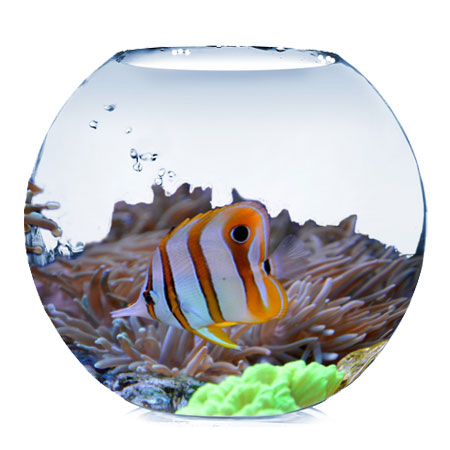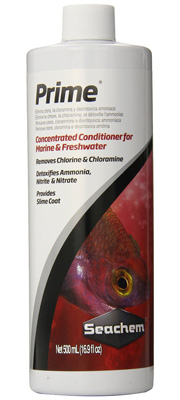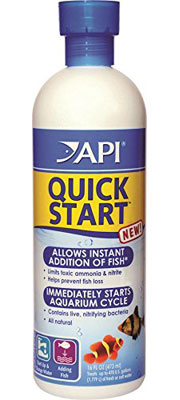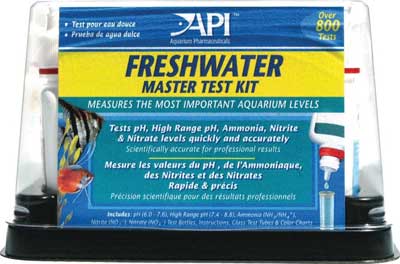Aquarium water test kits are an important part of aquarium ownership. They allow you to monitor the health of your tank and make sure that the water is safe for your fish. There are many different water test kits on the market, so it can be difficult to decide which one is right for you. In this article, we will discuss the 10 best aquarium water test kits and how they can help you keep your tank healthy!
Why test your aquarium water and what can go wrong if you don’t
If you don’t test your aquarium water, you could run into a number of problems. Your fish could become sick or even die if the water is not properly conditioned. ammonia, nitrites, and nitrates can build up in the water and make it toxic to fish. pH levels can also fluctuate, which can stress fish out and make them more susceptible to disease. By testing your water regularly, you can catch these problems before they cause serious harm to your fish.
Most aquarium test kits will test for ammonia, nitrites, nitrates, and pH levels. Some kits may also include tests for other parameters such as hardness and alkalinity. It is important to choose a kit that tests for all of the parameters that are important for your particular type of fish.
For example, if you have a saltwater aquarium, you will need to test for different parameters than if you have a freshwater aquarium.
There are a few different ways to test your aquarium water. The most common method is to use test strips. Test strips are dipped into the water and then compared to a chart that will indicate the levels of the different parameters. Test strips are relatively easy to use, but they are not always accurate.
Another common method is to use liquid test kits. These kits typically come with a dropper and a vial of liquid reagent. You will add a few drops of the reagent to a sample of your water and then compare the color to a chart that will tell you the levels of the different parameters. Liquid test kits are more accurate than test strips, but they can be more difficult to use.
The third type of water test kit is a digital test kit. These kits use an electronic sensor to measure the levels of the different parameters in your water. Digital test kits are the most accurate type of water test kit, but they can be more expensive than the other types.
No matter what type of aquarium you have, it is important to test your water regularly. Water test kits are a vital part of aquarium ownership and can help you keep your fish healthy and happy.
The 10 best aquarium water test kits on the market today
There are many different water test kits on the market, so it can be difficult to decide which one is right for you. In this section, we will discuss the ten best aquarium water test kits and how they can help you keep your tank healthy!
1. API Freshwater Master Test Kit
The API Freshwater Master Test Kit is one of the most popular water test kits on the market. It tests for ammonia, nitrites, nitrates, pH levels, and hardness. The kit comes with a step-by-step guide that makes it easy to use, even for beginners.
2. Salifert Test Kit
The Salifert Test Kit is a popular choice for saltwater aquariums. It tests for hardness and alkalinity. The kit comes with a color chart that makes it easy to interpret the results.
3. Nutrafin Test Kit
The Nutrafin Test Kit is a good choice for both freshwater and saltwater aquariums. It tests for pH levels. The kit comes with an easy-to-use color chart.
4. Fluval Test Kit
The Fluval Test Kit is a good choice for both freshwater and saltwater aquariums. It tests for ammonia, nitrites, nitrates, pH levels, hardness, and alkalinity. The kit comes with an easy-to-use color chart and a digital reader that makes it easy to interpret the results.
5. Red Sea Fish Pharm ARE21525 Marine Care Test Kit
The Red Sea Fish Pharm ARE21525 Marine Care Test Kit is a good choice for saltwater aquariums. It tests for ammonia, nitrites, nitrates, pH levels, alkalinity, and calcium levels. The kit comes with an easy-to-use color chart that makes it easy to interpret the results.
6. JBL TestLab Marine Aquarium Test Kit
The JBL TestLab Marine Aquarium Test Kit is a good choice for saltwater aquariums. It tests for ammonia, nitrites, nitrates, pH levels, alkalinity, and magnesium levels. The kit comes with an easy-to-use color chart that makes it easy to interpret the results.
7. Hanna HI758 Checker HC Freshwater Aquarium Test Kit
The Hanna HI758 Checker HC Freshwater Aquarium Test Kit is a good choice for freshwater aquariums. It tests for ammonia, nitrites, nitrates, pH levels, and hardness. The kit comes with an easy-to-use color chart that makes it easy to interpret the results.
8. Tetra EasyStrips six in one Aquarium Test Strips
The Tetra EasyStrips six-in-one Aquarium Test Strips are a good choice for freshwater aquariums. They test for chlorine, nitrites, nitrates, pH levels, hardness, and alkalinity. The strips are easy to use and provide accurate results.
9. AquaCare Aquarium Water Test Kit
The AquaCare Aquarium Water Test Kit is a good choice for saltwater aquariums. It tests for chlorine, nitrites, nitrates, pH levels, alkalinity, and calcium levels. The kit comes with an easy-to-use color chart that makes it easy to interpret the results.
10. Seachem MultiTest: Freshwater Master Test Kit
The Seachem MultiTest: Freshwater Master Test Kit is a good choice for freshwater aquariums. It tests for silicates. The kit comes with an easy-to-use color chart that makes it easy to interpret the results.
Testing your water regularly is the best way to ensure that your fish are healthy and happy. Water test kits are a vital part of aquarium ownership and can help you keep your tank in top condition. We hope that this article has helped you choose the best water test kit for your needs!
If you follow these tips, you should be able to find the best aquarium water test kit for your needs. Once you have chosen a water test kit, it is important to follow the instructions carefully. This will ensure that you get accurate results. These kits are an important part of aquarium ownership and can help you keep your tank healthy!
How to use each type of water test kit
Now that you know the different types of water test kits available, it’s time to learn how to use them. Each type of water test kit has its own set of instructions, so be sure to read the directions carefully before using any of them.
Ammonia test kits are used to measure the levels of ammonia in your water. Ammonia is a toxic substance that can be harmful to your fish, so it’s important to keep an eye on the levels in your tank. To use an ammonia test kit, follow these instructions:
- Fill a clean test tube with aquarium water.
- Add the required amount of ammonia testing solution to the test tube.
- Shake the test tube to mix the solution and water.
- Compare the color of the solution in the test tube to the color chart that came with your test kit.
Nitrite test kits are used to measure the levels of nitrites in your water. Nitrites are toxic substances that can be harmful to your fish, so it’s important to keep an eye on the levels in your tank. To use a nitrite test kit, follow these instructions:
- Fill a clean test tube with aquarium water.
- Add the required amount of nitrite testing solution to the test tube.
- Shake the test tube to mix the solution and water.
- Compare the color of the solution in the test tube to the color chart that came with your test kit.”
“Nitrate test kits are used to measure the levels of nitrates in your water. Nitrates are a substance that can be harmful to your fish if they build up to high levels in your tank. To use a nitrate test kit, follow these instructions:
- Fill a clean test tube with aquarium water.
- Add the required amount of nitrate testing solution to the test tube.
- Shake the test tube to mix the solution and water.
- Compare the color of the solution in the test tube to the color chart that came with your test kit.
pH test kits are used to measure the acidity or alkalinity of your water. The pH level of your water should be within a certain range in order to be safe for your fish. To use a pH test kit, follow these instructions:
- Fill a clean test tube with aquarium water.
- Add the required amount of pH testing solution to the test tube.
- Shake the test tube to mix the solution and water.
- Compare the color of the solution in the test tube to the color chart that came with your test kit.”
“Hardness test kits are used to measure the hardness of your water. Hard water is not necessarily harmful to your fish, but it can make it difficult to maintain the proper pH level. To use a hardness test kit, follow these instructions:
- Fill a clean test tube with aquarium water.
- Add the required amount of hardness testing solution to the test tube.
- Shake the test tube to mix the solution and water.
- Compare the color of the solution in the test tube to the color chart that came with your test kit.
Chlorine test kits are used to measure the levels of chlorine in your water. Chlorine is a substance that can be harmful to your fish, so it’s important to keep an eye on the levels in your tank. To use a chlorine test kit, follow these instructions:
- Fill a clean test tube with aquarium water.
- Add the required amount of chlorine testing solution to the test tube.
- Shake the test tube to mix the solution and water.
- Compare the color of the solution in the test tube to the color chart that came with your test kit.
Copper test kits are used to measure the levels of copper in your water. Copper is a substance that can be harmful to your fish, so it’s important to keep an eye on the levels in your tank. To use a copper test kit, follow these instructions:
- Fill a clean test tube with aquarium water.
- Add the required amount of copper testing solution to the test tube.
- Shake the test tube to mix the solution and water.
- Compare the color of the solution in the test tube to the color chart that came with your test kit.”
“Iron test kits are used to measure the levels of iron in your water. Iron is a substance that can be harmful to your fish, so it’s important to keep an eye on the levels in your tank. To use an iron test kit, follow these instructions:
- Fill a clean test tube with aquarium water.
- Add the required amount of iron testing solution to the test tube.
- Shake the test tube to mix the solution and water.
- Compare the color of the solution in the test tube to the color chart that came with your test kit.”
What to do if your results come back abnormal
“If your test results come back abnormal, it’s important to take action to correct the problem. For example, if your nitrate levels are too high, you can do a water change to remove some of the nitrates from your tank. If your pH levels are too low or too high, you can add chemicals to raise or lower the pH level. And if your chlorine levels are too high, you can remove the chlorine from your water with a de-chlorinator.”
With these instructions, you should be able to keep your aquarium healthy and safe for your fish! Regular water testing is the key to keeping your fish happy and healthy.
How often you should test your aquarium water
“How often you should test your aquarium water depends on a few factors. If you have a new tank, you should test the water every day until it stabilizes. Once your tank is established, you can test the water once a week or once a month. If you notice any changes in your fish’s behavior or appearance, you should test the water more frequently.”
Testing your aquarium water regularly is the best way to keep your fish healthy and happy!
Tips for maintaining a healthy aquarium
“Here are a few tips for maintaining a healthy aquarium:
Perform regular water changes. Depending on the size of your tank and the number of fish, you should do a water change every week or every month.
Clean your filter regularly. Depending on the type of filter you have, you may need to clean it every week or every month.
Remove any uneaten food from your tank. Uneaten food can decompose and release harmful chemicals into the water.
Test your water regularly. Test your water at least once a week, and more often if you notice any changes in your fish’s behavior or appearance.”
Following these tips will help you keep your aquarium healthy and happy! Regular maintenance is the key to success.
“Water quality is one of the most important factors in keeping your fish healthy and your aquarium clean. A water test kit is a valuable tool that can help you monitor the water quality in your tank and make sure that it is safe for your fish.




